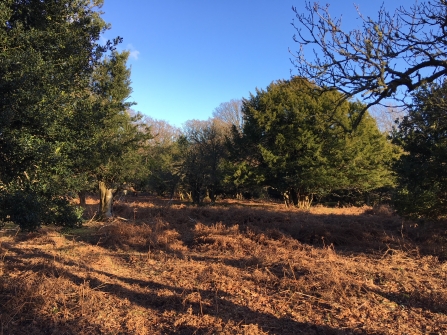What is wood pasture?
Well, the font of all knowledge (Wikipedia) describes it as:
‘Wood pasture is a historical European land management system in which open woodland provided shelter and forage for grazing animals, particularly sheep and cattle, as well as woodland products such as timber for construction and fuel, coppiced stems for wattle and charcoal making and pollarded poles.’
My Higher Level Stewardship document ( the grant system that governs most of what we do in the Trust) suggests that tree cover should be between 50 and 75 trees per hectare with areas of meadow interspersed.
So you can see, wood pasture is both an historic habitat type and somewhere in between a woodland and a meadow. It is an open habitat, with either meadows or heath, interspersed with trees, widely spaced but with patches of thickets, denser trees and scrub.
It is considered a man made habitat and for much of medieval times, the predominant woodland type in northern Europe. In the UK, people were free to graze their livestock in these areas, harvest fuel and fodder from the trees. Indeed, within the Solent area there was the Forest of Bere, much retracted in size nowadays but once stretching across a large swathe of the county.
The confines of wood pasture to a purely man made habitat has been questioned in recent years. Franz Vera published an in depth critique of much of the works in the 20th century on forest ecology and came to the conclusion that looking at pollen records and the composition of trees within Europe, the likelihood was that large herbivores kept a continual mosaic of open habitat, comparable to wood pasture that we have today.
Otherwise shade loving trees such as lime and beech would have taken over much of the landscape. Pollen records however show Oak, Hazel, Birch to be present in large quantities.





